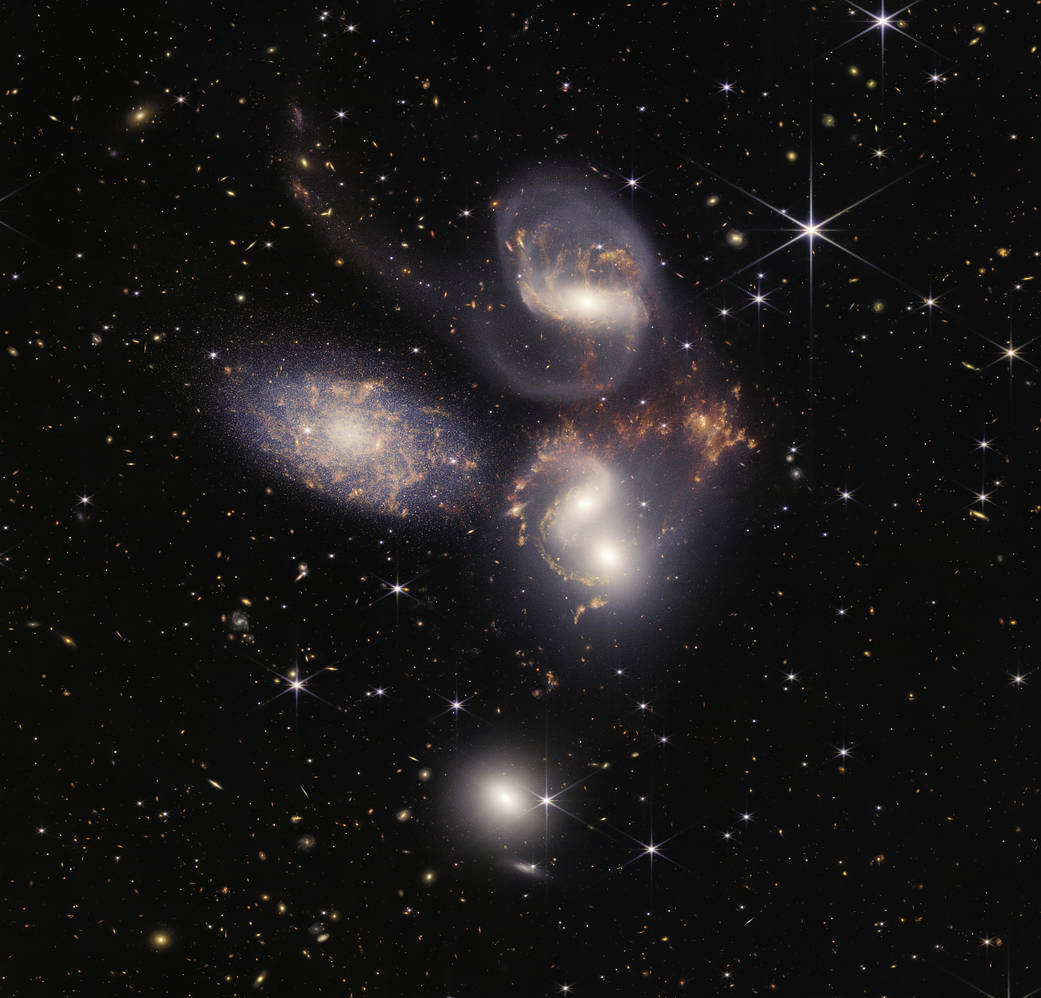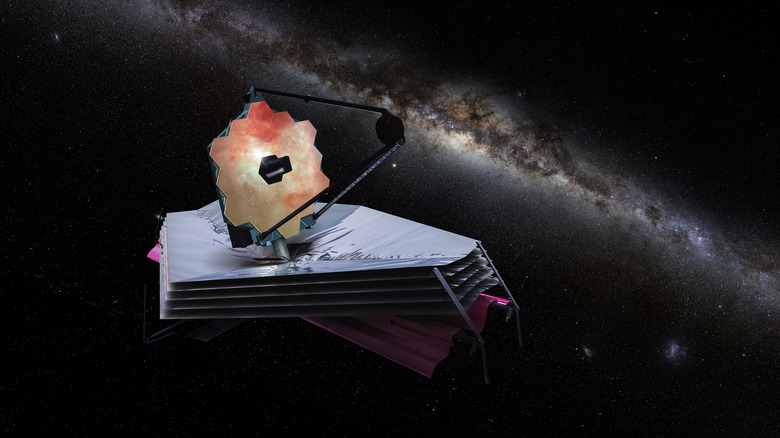James Webb Telescope Spotted A Massive Shockwave Traveling At Over 1 Million Mph
Stephan's Quintet was one of the targets of the first James Webb images that marked the brand-new telescope's first observations. Now, the quintet is at the center of Webb's observations as it spied a shockwave barreling through the collective. The Atacama Large Millimeter/submillimeter Array (ALMA) has also been at the center of the new observations.
The shockwave, which Webb astronomers attribute to the collision of an intruder galaxy known as NGC 731b with Stephan's Quintet. The new galaxy has been forcing its way into the quintet at a relative speed of around 1.8 million MPH (roughly 800 kilometers per second). At this speed, the galaxy could travel from Earth to the moon and back in a little over 15 minutes.
The collision between NGC 731b and Stephan's Quintet has given birth to this new shockwave, though, which Webb observed moving at over one million miles per hour. The invasion of the quintet by this intruder galaxy has caused a rippling through the interstellar plasma of the galaxies, kicking up warm and cold molecular hydrogen gas amidst the quintet.

This "recycling plant" of gases has been seen forming a giant cloud of gas that has since begun to break apart into a more fog-like appearance. Astronomers looking at the Webb and ALMA observations say that a small collision between two clouds of the gas could even mark the formation of a brand-new galaxy.
The importance of the data gathered from Webb observing this shockwave could have massive implications, too. For instance, it could help scientists understand how turbulent influences in the intergalactic medium helped form and evolve the early universe.
Either way, it's an intriguing phenomenon to know that we're watching, and it will be intriguing to see if Webb's observations bring to light a new galaxy within the quintet and whether or not that galaxy is somehow driven from the group due to the shockwaves that Webb has witnessed.
These findings were presented at the 241st meeting of the American Astronomical Society on January 9, 2023.
